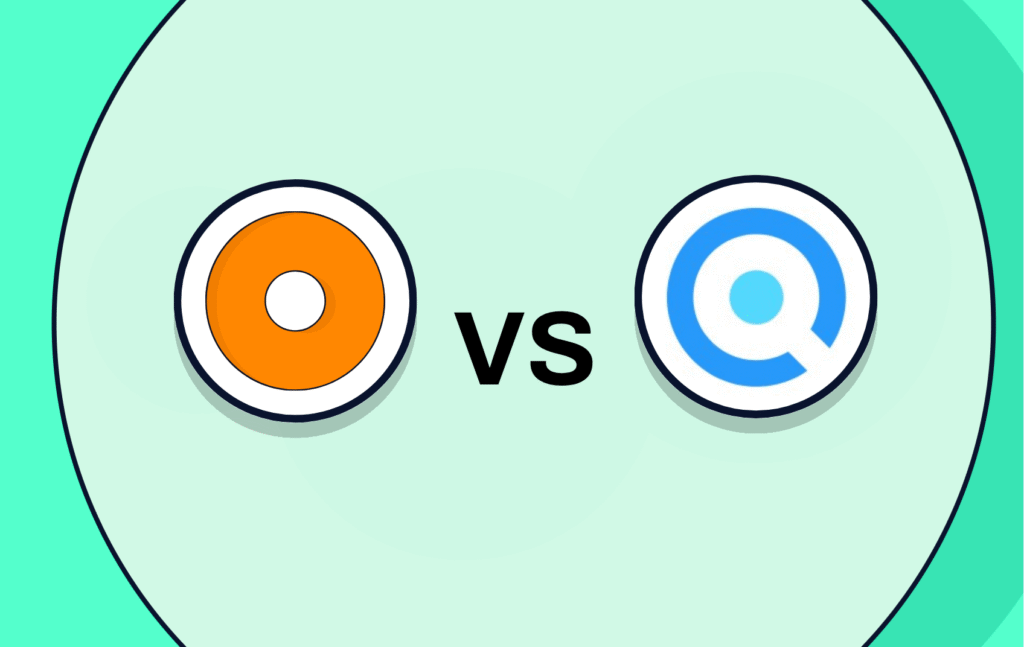TL;DR
- UnitQ is a quality intelligence tool. Great at detecting issues across reviews, tickets, and social.
- Bagel AI is product intelligence. Built to connect feedback and product work to business outcomes with minimal effort.
- If your success metric is fewer bugs, UnitQ fits.
- If your success metric is revenue, retention, and faster decisions, Bagel AI fits.
Switch to Bagel AI
What they were built to fix
UnitQ: Cleans up messy, high volume feedback and answers, What is breaking and where. Useful for CX, QA, and engineering to reduce incidents and improve perceived quality.
Bagel AI: Reduces alignment exhaustion between product and GTM. Answers, Which problems affect revenue, which accounts, and what should we do first. Useful for PMs, Product Ops, Sales Engineers, CS, and RevOps to prioritize work that moves numbers.
Short version: UnitQ finds patterns. Bagel AI turns patterns into decisions that tie to pipeline, renewals, and expansion.
The operating model behind each product
Think in loops, not features. Both tools participate in the same 4 step loop. They simply optimize for different outcomes.
- Detect
- UnitQ excels. Ingests tickets, reviews, social, surveys, app stores.
- Bagel AI ingests calls, CRM records, tickets, Jira, and notes, with account and revenue context.
- Decide
- UnitQ groups themes and flags severity.
- Bagel AI quantifies business impact. It ranks by ARR at risk, expansion potential, and timing.
- Act
- UnitQ alerts teams and updates dashboards.
- Bagel AI opens an impact card in Jira, posts into Salesforce opportunity, and notifies owners in Slack, so GTM and Product move together.
- Measure
- UnitQ tracks sentiment and issue volume.
- Bagel AI reconciles shipped work with movement in deals, renewals, and product adoption.
If you need a complete detect to measure loop where success is revenue, Bagel AI is designed for that job.
Capabilities and design choices
| Area | UnitQ | Bagel AI |
|---|---|---|
| Core purpose | Product quality monitoring and RCA | Product intelligence and revenue alignment |
| Feedback sources | Reviews, tickets, surveys, social | Sales calls, CRM, Zendesk, Jira, notes, support, plus meeting transcripts |
| AI approach | General NLP for theming and sentiment | Company trained model using your CRM, product taxonomy, and revenue logic |
| RCA and drivers | Yes, quality drivers and frequency | Yes, plus revenue exposure and account level drivers |
| Revenue attribution | Not primary | First class. ARR, deal size, renewal timing, expansion potential |
| Prioritization | Severity and volume | Business impact and timing with quantified risk and upside |
| Execution | Alerts and dashboards | Pushes work into Jira, posts impact to Salesforce or Gainsight, notifies owners in Slack |
| Measurement | Sentiment and issue counts | Deal movement, renewal outcomes, adoption and feature usage tied to shipped work |
| Typical owner | CX, QA, Eng leaders | PM, Product Ops, RevOps, CRO, CS leaders |
| Pricing motion | Enterprise, high annuals | Mid market to enterprise. Starts at accessible tier with unlimited seats and integrations |
How decisions are made in each product
1) Data model and context
- UnitQ: Event and sentiment centric. Feedback units carry a theme and severity.
- Bagel AI: Account, opportunity, and feature centric. Every pain point links to accounts, stages, renewal dates, tiers, and product items.
Why this matters: in B2B, one complaint from a top tier account with a renewal in 45 days is not equal to 100 low tier comments. Bagel AI encodes that reality.
2) Prioritization math you can explain to finance
- UnitQ: Prioritizes by frequency, spike velocity, or sentiment swing.
- Bagel AI: Prioritizes by expected business impact.
Where:
- Probability of change comes from evidence quality and account intent.
- Revenue exposure is ARR at risk or expansion potential.
- Time weight gives urgency to renewals or deals in this quarter.
This turns a debate into a clear decision with a number.
3) Execution inside the tools teams already use
- UnitQ: Alerts and dashboards. Teams pull insights.
- Bagel AI: Pushes a focused next step into Jira, Salesforce, Slack, or Gainsight with owners, due dates, and linked evidence. Teams do not need a new workflow. Minimal effort.
4) Measuring impact without extra spreadsheets
- UnitQ: Fewer incidents, higher app star ratings, improved sentiment.
- Bagel AI: Movement in opportunities or renewals tied to product work.
Example: Feature shipped on March 4. Bagel AI auto matches closed won on March 20 where the feature was a logged blocker. The note reads, SSO commitment unblocked legal. That is a measurable result, not just a happier sentiment line.
Two concrete examples
Example A: the onboarding friction
- 180 mentions of confusing SSO flows across tickets and reviews in 30 days.
- UnitQ: Flags a serious onboarding issue and provides trend charts.
- Bagel AI: Finds 4 renewals and 2 open deals naming SSO, total exposure 1.7M ARR. Sends a Jira impact card and posts to the 6 owners in Slack with the affected accounts and dates. The change ships inside 2 sprints. Two renewals close on time and one deal pulls into this quarter.
Example B: the performance complaint
- Mobile lag complaints spike after 7.3.2 release.
- UnitQ: Clusters by device, version, and locale. Engineering fixes a threading issue.
- Bagel AI: Also identifies that the spike correlates with trial drop offs in a target segment for an upsell package. PM adjusts packaging and CS runs a targeted outreach to the 32 accounts tagged in the spike. Trials stabilize and 6 upsells progress.
Takeaway: one tool is diagnostic. The other is diagnostic plus commercial.
- We already use dashboards in support and product analytics.
Dashboards are pictures of the past. You need a way to decide what to do next and who needs to know. Bagel AI provides that decision and distributes it into Jira, Salesforce, and Slack. - We can build this with our data team.
You will get a few static reports. You will not get a living model that ties feature ideas to real accounts, dollars, and timing, inside the tools where work happens. - We just need better theming and sentiment.
If success is fewer bugs and higher NPS only, UnitQ fits. If success is bookings and retention, you need impact math, not just sentiment.
Fit by scenario
| Scenario | UnitQ | Bagel AI |
|---|---|---|
| Monitor app health across app store reviews and social | ✅ | |
| Consolidate support tickets and detect spikes | ✅ | ✅ |
| Roadmap prioritization ranked by ARR at risk or upside | ✅ | |
| Quantify impact of a feature on open pipeline | ✅ | |
| Alert Sales and CS when a product fix unblocks a named account | ✅ | |
| Track sentiment across a large B2C user base | ✅ | |
| Tie shipped work to renewal save rate | ✅ | |
| Diagnose bugs quickly across platforms | ✅ | |
| Coordinate PM, SE, and CSM inside native tools | ✅ | |
| Make a quick case for a feature with customer evidence and dollars | ✅ |
How to choose in 5 questions
- Is your primary metric fewer incidents or better revenue and retention
- Do PMs and GTM need shared context in their native tools
- Can you explain prioritization to finance in one line with dollars
- Do you want a generic classifier or a model trained on your CRM and roadmap
- What happens the day after you detect a trend. Who acts and how is it measured
If you need detection only, UnitQ delivers. If you need decisions, execution, and measured impact, choose Bagel AI.
FAQ
No. It connects those signals to product work and revenue impact so decisions happen faster.
Yes. It pulls in reviews and tickets, but stays focused on connecting actions to adoption, conversion, and revenue.
Admin level access to CRM, ticketing, product backlog, and call recordings. Most teams connect in days.
No. Bagel AI posts insights and tasks into Jira, Salesforce, Slack, and Gainsight. Work stays where it already lives.
Closing thought
UnitQ is a feedback microscope. Bagel AI is a decision engine. If your roadmap must prove its contribution to revenue and retention, choose the tool that quantifies impact and moves work forward with minimal effort.



